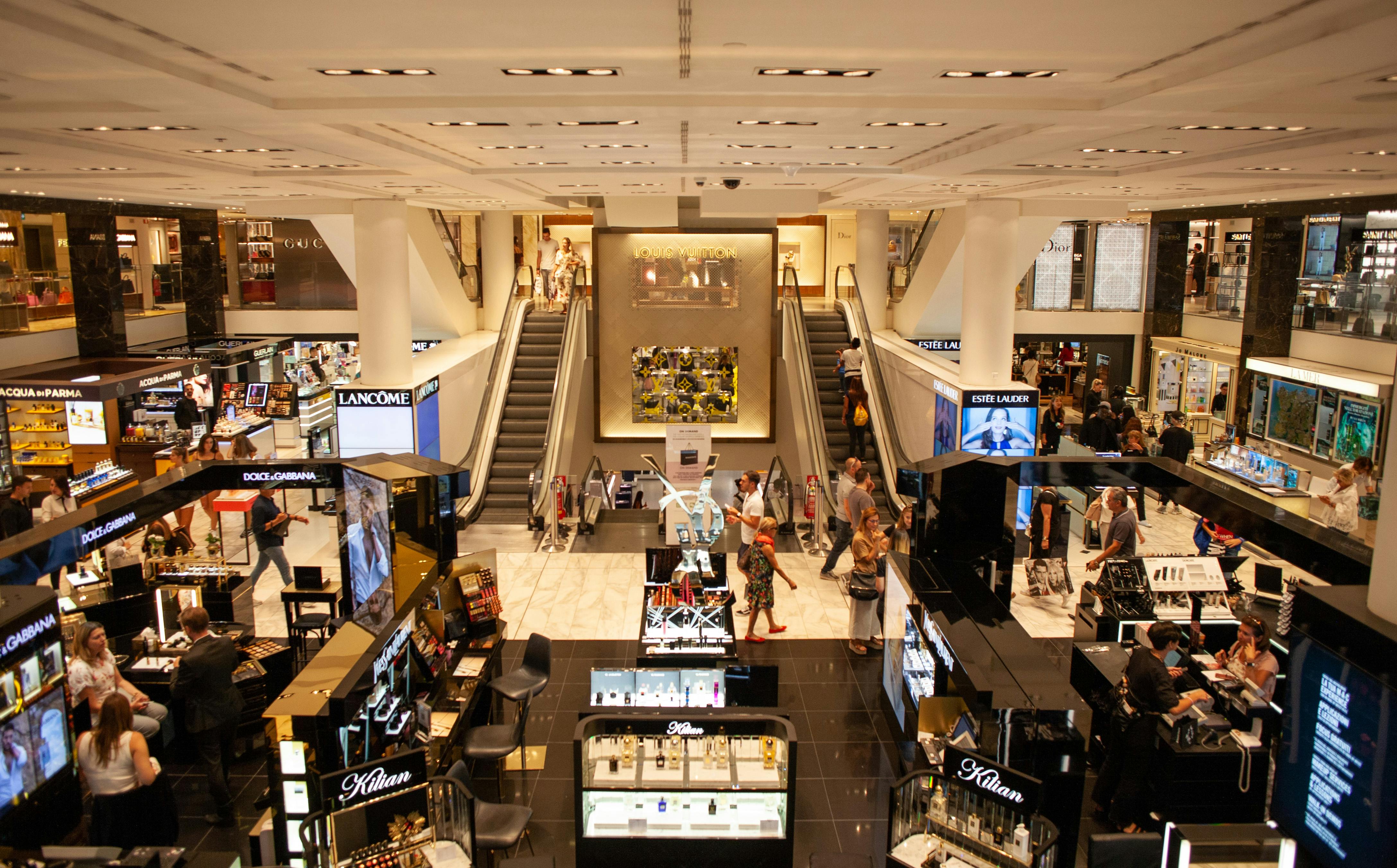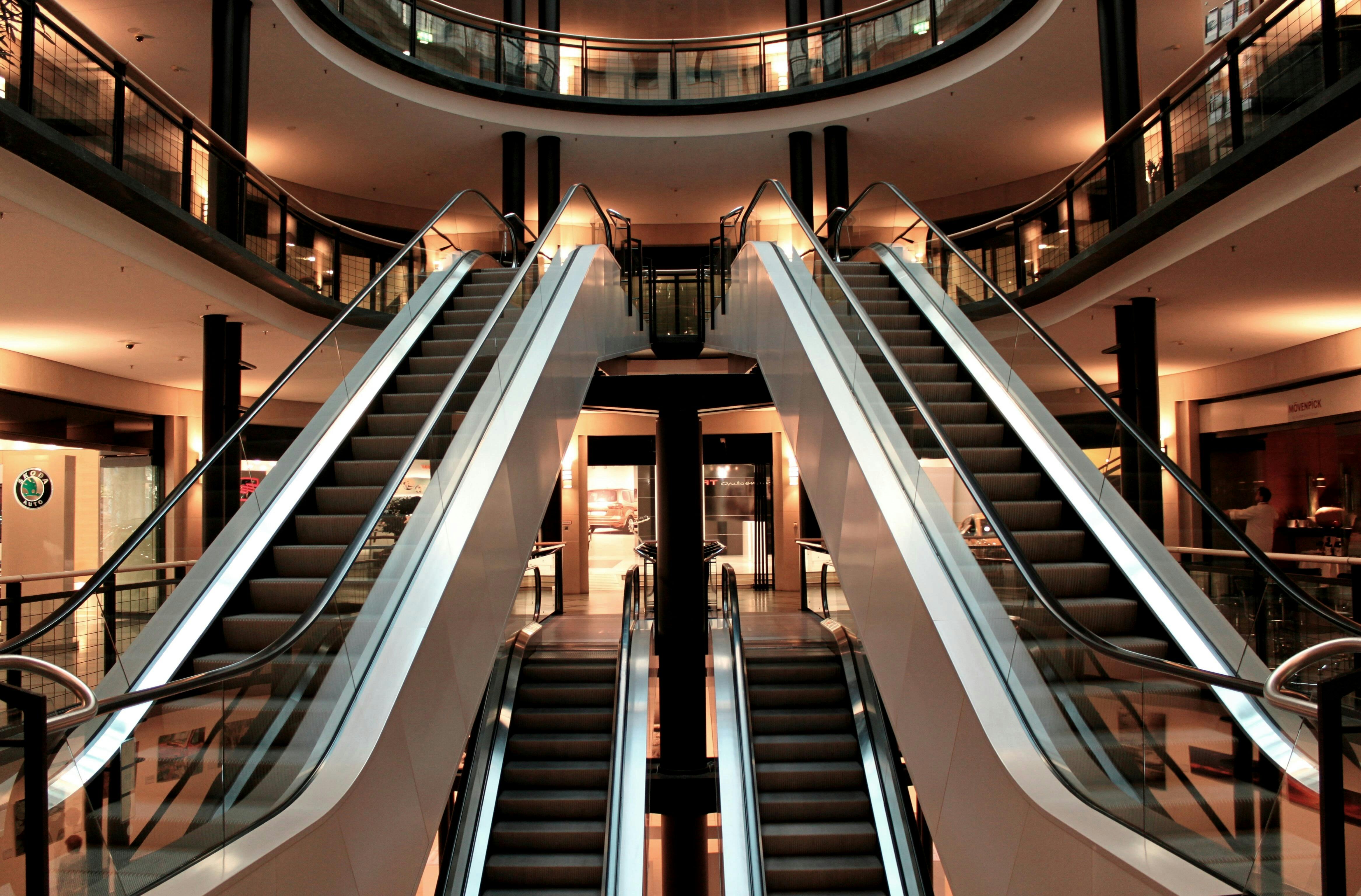Ready to turn insight into action?
We help organisations transform ideas into measurable results with strategies that work in the real world. Let’s talk about how we can solve your most complex supply chain challenges.

The invisible engine room of service and cost
Most guests, patients, students or fans never see your back-of-house. Yet that “invisible engine room” determines whether food arrives fresh and safe, bins don’t overflow during peak, forklifts don’t block corridors, linen turns around on time, and stores teams can actually find what they need. In Australia and New Zealand where labour, compliance and space aren’t cheap, BOH design is a competitive advantage.
This article gives a practical playbook: how to configure docks, corridors, goods lifts, cold rooms, stores, waste, and the systems that connect them so you lower cost-to-serve, keep people and product safe, and deliver reliable service during peak. No theatre—just working detail you can run with.
Start with the BOH strategy: what are you optimising for?
Before drawing corridors and racks, be clear on the service promise and constraints:
- Service model: Are you supporting fine-dining restaurants, quick-service outlets, ward pantries, student food courts, corporate events, stadium kiosks, or all of the above? Each has different cadence, temperature control and packaging needs.
- Peaks and pulses: Sporting schedules, check-in waves, ward rounds, lecture breaks, school holidays, your BOH must absorb pulses without collapsing.
- Regulatory envelope: HACCP, allergen control, Chain of Responsibility (CoR), Dangerous Goods (DG) for cleaning chemicals, waste segregation obligations.
- Labour model: Centralised vs local prep, multi-skilled labour, robotics and automation appetite.
- Footprint and access: Docks and roads, turnaround space, vertical transport, acoustic limits, curfews.
Once those are anchored, the design choices become logical.
Cost-to-serve: designing out waste, touches and wander
Every extra touch, metre walked, or minute of queue shows up as cost. Good BOH design attacks these quietly.
- Short, single-purpose paths
Layout goods flow so inbound → stores → production → pass/dispatch → front-of-house follows a forward motion, with no backtracking. Segregate clean and dirty flows to avoid cross-overs that force detours. - Proximity matters more than aesthetics
Place high-velocity stores (beverages, disposables, produce) closest to production lines and outlets. Assign pick-faces by demand not by category alone. A five-metre saving per pick becomes thousands of metres a week. - Right storage medium for the job
- Pallet racking for bulk in central stores.
- Mobile shelving and gravity lanes for high-velocity cartons in near-store rooms.
- Undercounter refrigerated drawers for line items where steps count.
- Cantilever or wide-span for awkward catering kit and event equipment.
- “One-visit” restocking
Design BOH to support consolidated restocking runs aligned to outlet demand. Use roll-cages and totes with planned routes and time windows. You minimise footsteps and FOH disruption. - Visual management
Clear line marking, shadow boards, standard bin stations and labelled lanes reduce look-and-wander time. It sounds pedestrian; it unlocks hours a day. - Data-meets-design
Use demand heatmaps to set min/max by location. If nightfill routinely over-delivers to a pantry, it’s a layout or policy problem, not an attitude problem.
Traffic congestion & dock management: the bottleneck you can’t ignore
Docks, aprons and ramp access tend to be the true constraint. A few principles change the game:
1) Separate people and plant (non-negotiable)
Pedestrian routes with physical separation (bollards, barriers, railings), marked crossings, speed control and clear sight lines. Don’t rely on painted lines alone.
2) Design for queueing off public roads
Provide safe holding lanes and marshalling space. Where curfews apply, plan for early arrivals with time-stamped booking windows and on-site amenities so drivers aren’t nudged into unsafe behaviours.
3) Slotting and book-in discipline
Adopt dock appointment systems with carrier self-service. Stagger chilled, frozen and ambient arrivals to match put-away capacity and minimise dwell. Hold carriers accountable to time windows (and pay for those you miss internally, behaviour follows incentives).
4) Right equipment, right bay
- Tail-lift bays for metro light vehicles.
- Leveller docks for pallets and MHE.
- Designated bays for DG (e.g., cleaning chemicals), and secure cages for high-shrink items.
- Hygiene zoning between waste collection and food receiving.
5) Pre-receipt and ASN accuracy
Advance shipment notices (ASN) enable pre-allocation of bays, staff and MHE. Mismatch between ASN and reality is a predictable cause of congestion. Measure it and address at source.
6) Vertical transport that keeps up
Goods lifts must match peak pallet and roll-cage flow. Under-sized lifts are silent killers of productivity. Specify lift car size for the longest cage + handler, with turning radius and door width to suit.
HACCP and food safety: design is your first control
Food safety lives or dies in ordinary moments: a poorly sealed loading bay on a 38°C day, a drippy mop bucket stored next to dry stores, or a fish crate that takes a wrong turn through a pastry prep room. Bake the controls into the design.
- Zoning and segregation
- Raw vs ready-to-eat segregation in production and storage.
- Dedicated allergen storage and prep with colour-coded smallwares.
- Separate refuse and recycling paths from food and clean equipment.
- Temperature integrity
- Dock-to-coolroom distance minimised, with insulated curtains and fast-action doors.
- Staging areas sized and chilled for peak inbound volumes (no “temporary” pallets lingering in ambient).
- Enough blast or rapid-chill capacity for production schedules.
- Hygiene and drainage
- Falls to floor wastes in wet areas; no dead corners.
- Chemical stores ventilated and bunded, with measured dosing systems.
- Mop rooms with racks and exhaust; never in food areas.
- Materials and finishes
- Durable, cleanable surfaces (epoxy floors, food-grade panels).
- Cove skirtings; no open joints or porous surfaces.
- Lighting to HACCP guidelines for inspection tasks.
- Workflow discipline
- Handwash basins where they’re needed, not just where they fit.
- Pass-through dishwash with dirty-to-clean segregation.
- Clear SOPs for unlabeled or damaged goods at receiving—quarantine locations designed in.
Stores optimisation: the difference between tidy and truly productive
1) Segment stores by role
- Central stores: Bulk holding, supplier receipts, QA and batched breaks.
- Near-store rooms: High-velocity lines close to outlets/production.
- Line-side storage: Immediate use (hours, not days).
- Secure stores: High-shrink or controlled goods (spirits, razor blades, DG).
2) Slot by demand and ergonomics
- Golden zone (waist to shoulder) for frequent picks.
- Heavy items at lower levels with mechanical assist where needed.
- Fixed pick faces with overflow behind to reduce re-slotting.
3) Min/max that reflect reality
Set policy by location and season. Buffer ahead of big events. Review after promotions or menu changes. If FOH keeps “squirrelling” stock, your near-store settings are wrong.
4) Kitting and standard packs
Pre-kit event packs or ward replenishment totes in central stores. Standardise pack quantities to match real consumption. You limit partials and FOH clutter.
5) Inventory accuracy in the messy middle
Near-stores and pantries are accuracy graveyards. Use simple scanning discipline, location labels, periodic cycle counts, and a replenishment window (e.g., 10:00–11:00 daily) to put control back in the system.
Dock-to-waste: the reverse flow everyone forgets
Waste is a BOH design topic, not an afterthought.
- Stream separation at source: Organics, commingled, cardboard, CDS containers, soft plastics (where viable), general waste, and grease trap by-products.
- Bin room design: Drainage, ventilation, wash-down, and pest control.
- Compactors and balers: Sized for peak; located to avoid cross-contamination with food flows.
- CDS (Container Deposit Scheme): Where relevant, dedicate space and procedures; it reduces clutter and creates a modest revenue stream.
- Back-hauling opportunities: Use empty cages on return legs for cardboard and CDS, with clear hygiene protocols.
Linen, uniforms and small wares: the quiet flow that stalls kitchens
- Dedicated clean/soiled segregation with pass-through lockers or hatches.
- Laundry logistics: Caged circulation from dock to linen rooms and back—planned routes, time windows and storage densities.
- Uniform issue: Vended or controlled issue points close to shift muster areas reduces late starts and locker congestion.
- Smallwares control: Shadow boards and standard kits for each outlet—missing ladles are a bigger productivity issue than people admit.
Cold chain done properly
- Coolroom sizing for peak + receiving dwell (not just average stock).
- Racking that suits airflow: avoid over-dense stacking that freezes one pallet and warms the next.
- Door discipline: Fast-roll doors, strip curtains and vestibules at key entries.
- Thermal mapping and monitoring: Loggers and alerts; act on trends, not anecdotes.
Digital enablers that keep it simple
- Dock appointment & yard view: Carrier self-service bookings, on-site check-in, live bay status.
- WMS/light WMS: Location control, min/max, FEFO for chilled, ASN receiving.
- Handhelds and scanning discipline: If it isn’t scanned, it isn’t real.
- BOH task boards and pick-to-route: Simple digital or visual systems that tell teams where to go next.
- Menu/production planning link: Changes in menus or event packs push bills of materials into stores planning automatically.
- Incident & compliance logging: Food safety checks, temperature logs, load restraint photos. Easy to capture, easy to audit.
Labour and rostering: design for the people who run it
- Short walks, fewer touches: The most effective productivity tool is the floor plan.
- Workstations sized for two-person tasks (lifting, tray up-ending) to avoid unsafe improvisation.
- Clear sightlines for supervisors to coach and balance work.
- Shift rhythms aligned to deliveries and production: Nightfill for central stores, early AM for FOH restock, late night for waste pull.
- Training built into the fit-out: Visual SOPs, QR-linked micro-videos, and logical kit placement help new staff succeed quickly.
Sustainability that pays its own way
- Fewer kilometres, fewer touches: The same levers that lower cost often lower emissions.
- Electrified MHE and efficient refrigeration: New gear reduces energy use and improves handling precision.
- Water-wise wash-down and grease management to protect drains and reduce odour.
- Re-usable transit packaging: Dollies, totes and durable edge protection reduce cardboard mountains.
- Supplier collaboration: Slotting, ASN quality, and right-sized deliveries lower both diesel and damage.
Governance, safety and CoR: make compliance part of the furniture
- Load restraint bays and checklists at the dock, with photo evidence on dispatch.
- Inductions that stick: Short, site-specific inductions for drivers, contractors and temp staff.
- Auditable food safety: Temperature, allergen and cleaning records tied to locations and times, not “clipboard theatre.”
- Risk reviews on layout changes: Every layout tweak gets a quick WHS and CoR lens before anything moves.
- KPIs that matter: Near misses, restraint non-conformances, stock age, pick rate, queue time, DIFOT/OTIF, and cost-to-serve.
A practical BOH design blueprint (that you can start this quarter)
1) Walk the site with a stopwatch and a camera
Time how long common tasks take, where people wait, and where equipment clashes. Photograph pinch points, blind corners, and recurring workarounds.
2) Map the flows
Inbound → stores → production → pass/dispatch → FOH; and reverse flows for waste, soiled goods and returns. Mark temperature zones and allergen lines.
3) Quantify the peaks
Use schedules, rosters and event calendars to calculate hourly inbound pallets, outbound roll-cages, and bin pulls at peak. Size docks, lifts and staging to peak not average.
4) Redraw the lines
Propose a “one-way” BOH path, add separation, right-size near-store rooms, pin down cool room doors and staging. Don’t be afraid to reclaim misused FOH nooks for BOH work that actually pays back.
5) Lock the policy
Min/max by location, replen windows, slotting rules, ASN accuracy threshold, carrier time windows, hygiene responsibilities per zone.
6) Pilot one zone
Upgrade one dock bay, one near-store room, one corridor. Measure queue time, pick rate, and incident trends. If you can’t prove it there, keep iterating on drawings before rolling out.
7) Scale with discipline
Build a simple BOH standards manual (drawings, equipment lists, signage pack, SOPs). Use it on every upgrade, fit-out and vendor change.
What “good” looks like after 3–9 months
- Shorter queues, fewer blockages: Dock appointment adherence above 90%; average dwell down; no forklift-pedestrian conflicts.
- Higher pick productivity: Steps and touches cut by double digits; fewer urgent restocks during service.
- Cleaner food safety record: Less temperature deviation, fewer cross-overs, faster corrective actions.
- Visible stock control: Near-stores tidy, counts within tolerance, fewer FOH “just-in-case” stashes.
- Lowered cost-to-serve: Waste in movements, damage and overtime trimmed; labour hour per unit moves in the right direction.
- Happier teams: People can do the job without wrestling the building.
How Trace Consultants can help
We help Australian and New Zealand organisations turn BOH into a strategic asset across integrated resorts, hotels, universities, hospitals, stadiums, airports, precincts and large venues. Typical support includes:
- BOH Diagnostics & Business Case
Rapid current-state assessment of docks, corridors, lifts, stores, cold chain and waste, with time-and-motion sampling. We produce a quantified case for change linking queue time, steps, touches, food safety risk and damage to cost-to-serve, with pragmatic capital and opex options. - Layout & Flow Redesign
CAD-level designs for docks, marshalling, near-stores, coolrooms, production prep, dishwash, waste rooms and back corridors. We build safe, one-way flows with proper segregation and vertical transport sizing. - Dock Management & Carrier Enablement
Slotting rules, yard procedures, load restraint standards, and a simple appointment system setup. We align carriers to windows, ASNs and hygiene expectations, backed by clear performance measures. - HACCP & Allergen-by-Design
Zoning, finishes, drainage, staging and SOPs that make safe behaviour easier than unsafe. We integrate allergen controls, cleaning workflows and cold chain integrity from the dock to the pass. - Stores & Inventory Optimisation
Location-level min/max, pick-face design, kitting, FEFO in chilled, and near-store standards that actually hold in daily operations. We connect menu and event planning to stores replenishment. - Waste, Linen & Reverse Logistics
Right-sized bin rooms, stream separation, CDS processes, laundry circulation and uniform issue that neither contaminate nor clog your corridors. - Digital & Operating Model
Light-touch WMS/yard tools, handheld scanning patterns, dock appointment software, dashboards and QR-linked SOPs. We define the rhythm, who decides what, when and then support it with the simplest technology that works. - Implementation & Change
We don’t drop drawings and leave. We work with your chefs, nurses, storekeepers, stewards, event managers and carriers to sequence changes safely, train teams, and lock in the gains.
No invented case studies; just practical, measurable improvements that stand up in audits, board papers and on the floor.
Common pitfalls (and how to avoid them)
- Designing for average, not peak.
Fix: Use real hourly peaks from rosters and event schedules to size docks, lifts and staging. - Ignoring reverse flows.
Fix: Give waste, soiled and returns proper routes and rooms or they will spill into food areas. - Letting FOH aesthetics steal BOH function.
Fix: Protect BOH space in concept design. A one-metre bite from BOH becomes years of extra labour. - Relying on heroics, not standards.
Fix: Visual SOPs, labelled routes, pick-faces and replen windows beat good intentions every shift. - Treating food safety as paperwork.
Fix: Build safety into the fabric with zones, drains, doors, staging and then make logging effortless.
Your first moves this month
- Measure the queue. Take one week of dock dwell times and appointment adherence.
- Count the steps. Shadow two representative replen runs; map the metres and touches.
- Open the cool room door. Check staging overflow, temperature trends and door discipline.
- Walk the waste. Follow a bin from FOH to the truck; note every cross-over and spillage risk.
- Pick one pilot. A near-store refit or a dock appointment process can pay back quickly and show the system what “good” feels like.
If you want a partner who’ll help you sequence the work, make the numbers stack up, and deliver change that teams embrace, Trace Consultants would love to help.
About Trace Consultants
Trace is an Australian supply chain and procurement advisory firm supporting government and commercial organisations across Australia and New Zealand. We specialise in BOH logistics and operating model design for complex estates, integrated resorts, hospitals, universities, stadiums and precincts reducing cost-to-serve, improving safety and compliance, and lifting the service experience for guests, patients and staff.
Ready to make your BOH flow? Let’s walk the floor together and map the first 90 days.
Ready to turn insight into action?
We help organisations transform ideas into measurable results with strategies that work in the real world. Let’s talk about how we can solve your most complex supply chain challenges.









